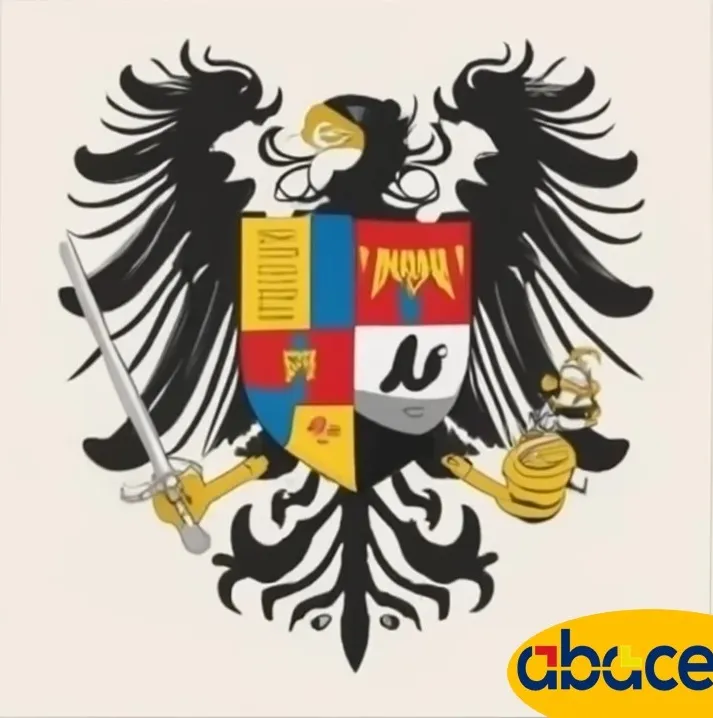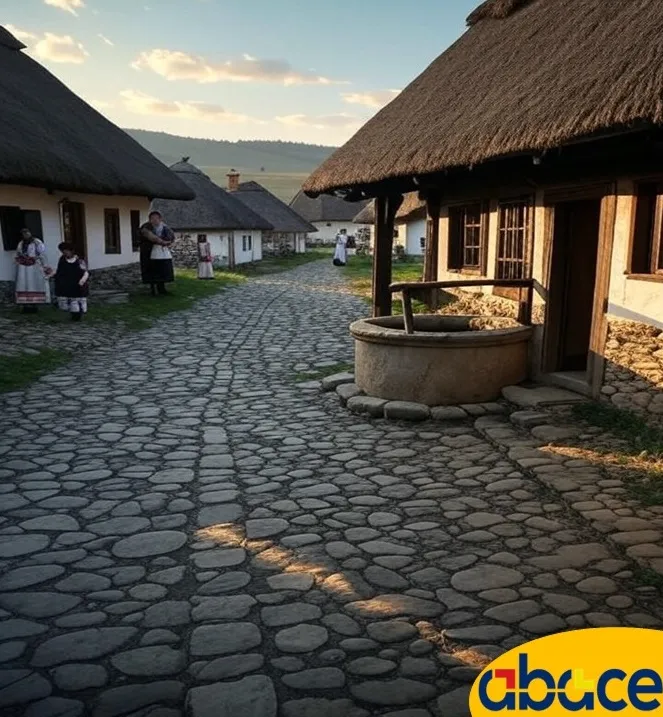Romania (in Romanian: România) is located in southeastern Europe, and its capital is Bucharest. Romania’s neighbors include Hungary, Serbia, Moldova, Ukraine, and Bulgaria, and in terms of geographical location, it is relatively close to Iran. With an area of 238,400 square kilometers, Romania is considered the ninth largest country in the European Union, and with a population of approximately 19 million, it ranks as the seventh most populous country in the European Union. This country joined NATO in 2004 and the European Union in 2007. However, in this section, while providing general information about Romania, we intend to discuss the history of Romania. The Abacheh Association is an active organization in the field of immigration to Romania. In this section, we will generally discuss the history of Romania. This article will also be updated.
History of Romania:
In 1003 AD, Stephen I of Hungary established control over most parts of Transylvania (the current central and northern regions of Romania), and in the 13th century, Hungary brought Saxons and tribes of Germans to this region to increase its influence and control. In the mid-13th century, due to pressure from the Hungarians, many Vlachs living in Transylvania migrated to the southern and eastern regions of the Carpathian Mountains, where they established the province of Wallachia and later the province of Moldavia, which were ruled by local kings under the influence of Hungary and sometimes Poland.

History of Romania:
In the 15th century, the Ottoman attack on Wallachia marked a new era in Romania and brought this region under its control, but this control was indirect for 26 years until the Ottomans defeated Hungary, causing no changes in the religion, land, or administration of the region. However, in the late 16th century, one of Wallachia’s local rulers, named Michael the Brave, rebelled against the Ottomans and managed to briefly unite Wallachia, Moldavia, and Transylvania. Although this period was very short and with the death of Michael the Brave in 1601, the Ottomans regained control over Wallachia and Moldavia, and the Hungarians over Transylvania, this ruler’s actions laid the groundwork for subsequent movements to unite the various parts of Romania.
The history of Romania’s Moldavia is similar to that of Wallachia. After dominating Wallachia, the Ottomans also took control of Moldavia, which had previously been under the influence of Hungarians and Poles. Stephen the Great, one of Moldavia’s local rulers, conducted numerous and continuous struggles against the Ottomans from 1457 to 1504 and, along with Michael the Brave, became known as national heroes in Romania’s history. From the early 1700s, Ottoman influence in the region began to decline, and in the 18th century, Catherine the Great of Russia declared Moscow the protector of all Orthodox Christians under Ottoman rule and took control of Wallachia and Moldavia.
Recommended article: Romanian culture and art
Ottoman attacks, a page from Romanian history:
In the 15th century, the Ottomans launched a new era in Romania by invading Wallachia and taking control of the region. However, this control remained indirect for 26 years, until the Ottomans defeated Hungary. However, in the late 16th century, a local ruler of Wallachia, Michael the Brave, rebelled against the Ottomans and briefly united Wallachia, Moldavia, and Transylvania. Although this period was short-lived, and with the death of Michael the Brave in 1601, the Ottomans regained control of Wallachia and Moldavia, and the Hungarians regained control of Transylvania, this act of the ruler paved the way for subsequent movements to unite the various parts of Romania.
The history of the Moldavian region of Romania is similar to Wallachia. After conquering Wallachia, the Ottomans also took control of Moldavia, which had previously been under the influence of the Hungarians and Poles. Stephen the Great, a local ruler of Moldavia, fought many continuous battles against the Ottomans from 1457 to 1504 and, together with Michael the Brave, became known as national heroes of Romania in the history of the country. From the beginning of the 1700s, Ottoman influence in the region began to decline, and in the 18th century, Catherine the Great of Russia declared Moscow the protector of all Orthodoxy under Ottoman influence and took Wallachia and Moldavia under her rule.

Russo-Ottoman Wars in Romanian History:
Following numerous Russo-Turkish wars, Moscow gained concessions regarding Romania from the Turks, including annexing the Bessarabia region in Moldavia to its territory under the Treaty of Bucharest (1812), and in the Treaty of Adrianople (1829), Wallachia and Moldavia became Russian protectorates. From the early 1800s, movements in Moldavia and Wallachia were constantly suppressed by the Russian and Ottoman governments, and finally, in the 1856 Paris Treaty, signed at the end of the Crimean Wars between Russia and the Ottomans, the tribute of Moldavia and Wallachia to the Ottomans was emphasized, and Russia returned southern Bessarabia to Moldavia. In 1857, the governing councils of Wallachia and Moldavia voted for the union of these two regions, paving the way for their unification with Transylvania.
In 1878, following the war between Russia and the Ottomans, the 500-year Ottoman rule over Wallachia and Moldavia ended, and in the same year, during the Berlin Conference, Romania’s independence was officially recognized, southern Bessarabia was given to Russia, and in return, the northern Dobruja region was taken from Bulgaria and annexed to Romania. In 1912 and 1913, two Balkan wars took place, and Romania, by entering the Second Balkan War, also took southern Dobruja from Bulgaria and added it to its territory. In 1914, Carol I, who had ruled Romania for some time, passed away, and his grandson Ferdinand I succeeded him.

The First World War:
At the beginning of World War I, Romania declared neutrality but joined the Allies in August 1916, and after the war, it gained Transylvania, parts of Banat, and Maramureș from Hungary, Bukovina from Austria, and Bessarabia from Russia, effectively doubling Romania’s territory and population by the end of World War I. During the 1920s, Romania experienced good economic growth, and a parliamentary regime was established in the country during this period, but ethnic disputes, stemming from the dissatisfaction of the people in the territories annexed to Romania, led to political instability in the country.
After 1929, Romania was also affected by the consequences of the global economic crisis, and unemployment and poverty led to the formation and growth of fascist organizations, the most prominent of which was the anti-ethnic Iron Guard. In 1930, King Carol II came to power, and Romania gradually came under the influence of Nazi Germany. In 1939, following the signing of a treaty between Russia and Germany, Romania ceded parts of Transylvania to Hungary, Bessarabia and northern Bukovina to the Soviet Union, and southern Dobruja to Bulgaria.

The Second World War
During World War II, Romania, as an ally of Germany, declared war against Russia. Its forces captured Bessarabia and Bukovina and advanced as far as southern Ukraine but were defeated in the battles of Stalingrad in 1942 and 1943, following which Russian forces entered Romania in 1944, forcing Bucharest to surrender to the Soviet Union and declare war against Germany. From then until the rise of Ceaușescu, under Soviet pressure, leftists were consistently in power in Romania until Ceaușescu’s rise and the exile of King Michael institutionalized this influence.
Recommended article: Studying in Romania





